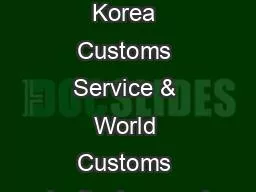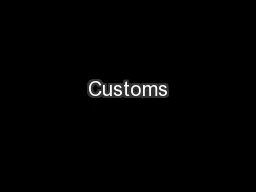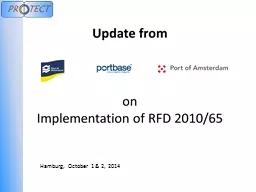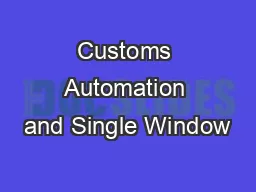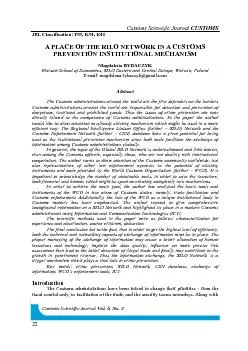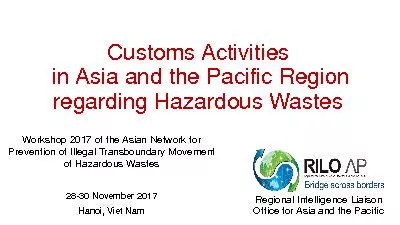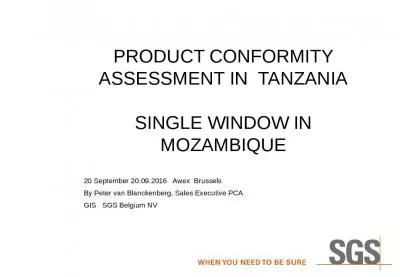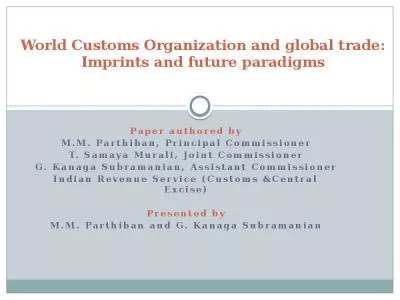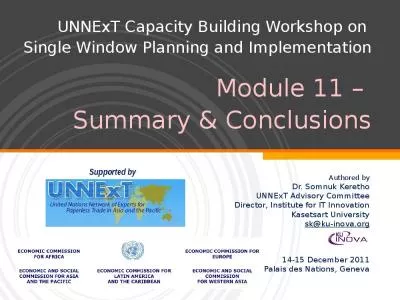PPT-Single Window : Korea Customs Service & World Customs Organization’s experiences
Author : windbey | Published Date : 2020-08-27
May 2011 World Customs Organization 50 million people Contents Introduction of WCO Single Window Concept WCO Data Model Introduction of KCS KCS Single Window history
Presentation Embed Code
Download Presentation
Download Presentation The PPT/PDF document "Single Window : Korea Customs Service &..." is the property of its rightful owner. Permission is granted to download and print the materials on this website for personal, non-commercial use only, and to display it on your personal computer provided you do not modify the materials and that you retain all copyright notices contained in the materials. By downloading content from our website, you accept the terms of this agreement.
Single Window : Korea Customs Service & World Customs Organization’s experiences: Transcript
Download Rules Of Document
"Single Window : Korea Customs Service & World Customs Organization’s experiences"The content belongs to its owner. You may download and print it for personal use, without modification, and keep all copyright notices. By downloading, you agree to these terms.
Related Documents

